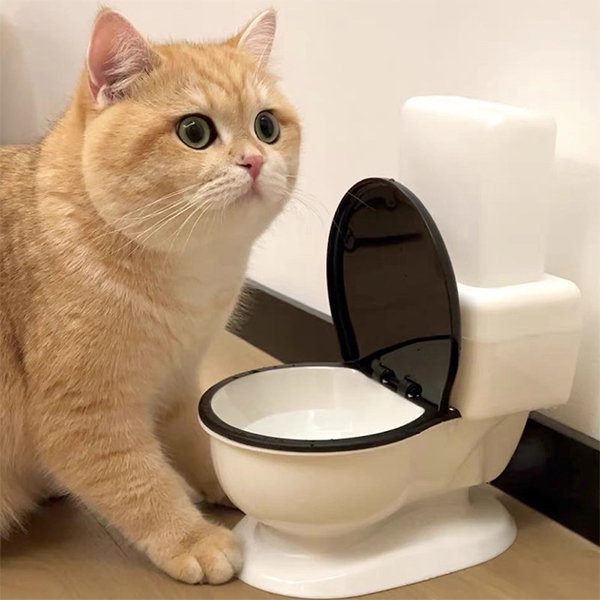Reasons Flushing Cat Poop Down Your Toilet Isn't a Good Idea - Advice for Proper Handling
Reasons Flushing Cat Poop Down Your Toilet Isn't a Good Idea - Advice for Proper Handling
Blog Article
We've stumbled on this great article pertaining to How to Dispose of Cat Poop and Litter Without Plastic Bags listed below on the web and reckoned it made sense to write about it with you over here.

Introduction
As pet cat owners, it's vital to bear in mind just how we deal with our feline good friends' waste. While it may seem practical to purge feline poop down the toilet, this practice can have destructive repercussions for both the atmosphere and human health.
Environmental Impact
Flushing pet cat poop presents dangerous microorganisms and bloodsuckers right into the water, posturing a considerable danger to water ecological communities. These impurities can negatively impact marine life and compromise water quality.
Health Risks
In addition to environmental problems, flushing cat waste can likewise position wellness dangers to human beings. Feline feces may contain Toxoplasma gondii, a parasite that can trigger toxoplasmosis-- a potentially extreme disease, particularly for expecting females and people with weakened body immune systems.
Alternatives to Flushing
Fortunately, there are safer and a lot more responsible means to take care of cat poop. Take into consideration the following alternatives:
1. Scoop and Dispose in Trash
The most typical method of getting rid of pet cat poop is to scoop it into an eco-friendly bag and toss it in the trash. Be sure to utilize a dedicated litter inside story and take care of the waste immediately.
2. Usage Biodegradable Litter
Go with biodegradable pet cat trash made from materials such as corn or wheat. These clutters are environmentally friendly and can be securely disposed of in the garbage.
3. Bury in the Yard
If you have a backyard, think about hiding cat waste in a marked area far from vegetable yards and water resources. Be sure to dig deep adequate to prevent contamination of groundwater.
4. Mount a Pet Waste Disposal System
Invest in a pet dog waste disposal system specifically created for pet cat waste. These systems utilize enzymes to break down the waste, reducing odor and environmental influence.
Conclusion
Liable pet dog ownership expands beyond supplying food and sanctuary-- it also includes proper waste administration. By avoiding flushing feline poop down the commode and choosing alternate disposal approaches, we can reduce our ecological footprint and safeguard human wellness.
Why Can’t I Flush Cat Poop?
It Spreads a Parasite
Cats are frequently infected with a parasite called toxoplasma gondii. The parasite causes an infection called toxoplasmosis. It is usually harmless to cats. The parasite only uses cat poop as a host for its eggs. Otherwise, the cat’s immune system usually keeps the infection at low enough levels to maintain its own health. But it does not stop the develop of eggs. These eggs are tiny and surprisingly tough. They may survive for a year before they begin to grow. But that’s the problem.
Our wastewater system is not designed to deal with toxoplasmosis eggs. Instead, most eggs will flush from your toilet into sewers and wastewater management plants. After the sewage is treated for many other harmful things in it, it is typically released into local rivers, lakes, or oceans. Here, the toxoplasmosis eggs can find new hosts, including starfish, crabs, otters, and many other wildlife. For many, this is a significant risk to their health. Toxoplasmosis can also end up infecting water sources that are important for agriculture, which means our deer, pigs, and sheep can get infected too.
Is There Risk to Humans?
There can be a risk to human life from flushing cat poop down the toilet. If you do so, the parasites from your cat’s poop can end up in shellfish, game animals, or livestock. If this meat is then served raw or undercooked, the people who eat it can get sick.
In fact, according to the CDC, 40 million people in the United States are infected with toxoplasma gondii. They get it from exposure to infected seafood, or from some kind of cat poop contamination, like drinking from a stream that is contaminated or touching anything that has come into contact with cat poop. That includes just cleaning a cat litter box.
Most people who get infected with these parasites will not develop any symptoms. However, for pregnant women or for those with compromised immune systems, the parasite can cause severe health problems.
How to Handle Cat Poop
The best way to handle cat poop is actually to clean the box more often. The eggs that the parasite sheds will not become active until one to five days after the cat poops. That means that if you clean daily, you’re much less likely to come into direct contact with infectious eggs.
That said, always dispose of cat poop in the garbage and not down the toilet. Wash your hands before and after you clean the litter box, and bring the bag of poop right outside to your garbage bins.
https://trenchlesssolutionsusa.com/why-cant-i-flush-cat-poop/

I ran across that piece of writing on How to Dispose of Cat Poop and Litter Without Plastic Bags while doing research the web. Liked our entry? Please share it. Let other people check it out. Thanks a lot for going through it.
Book With Us Today! Report this page